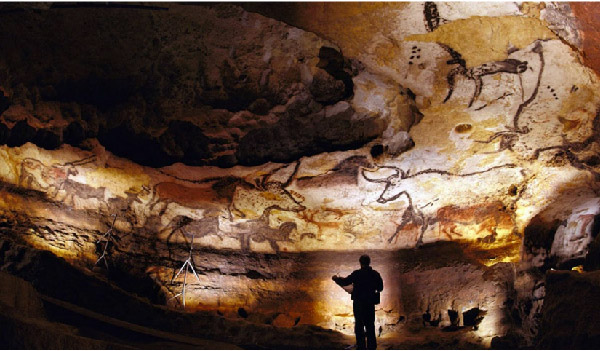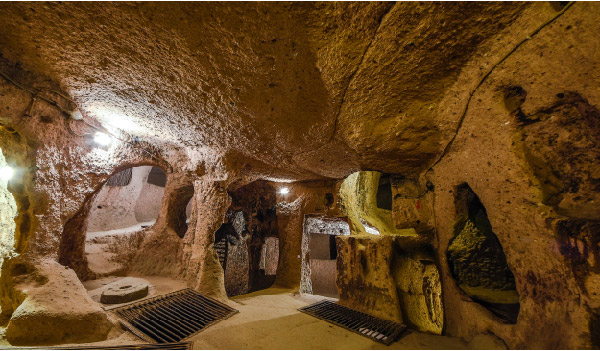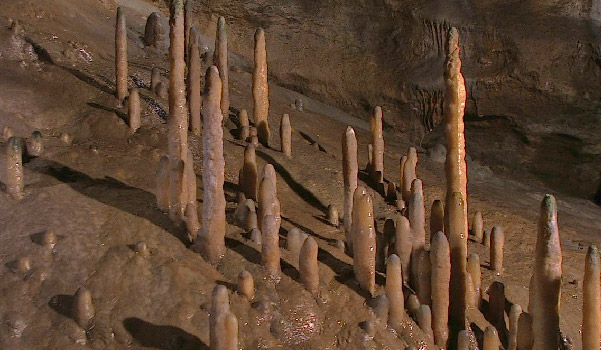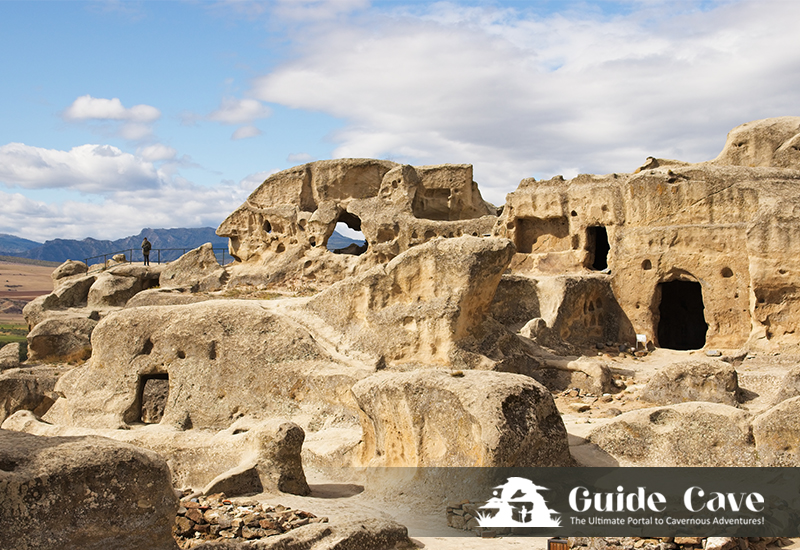Introduction
Caves have played an essential role in shaping civilizations for thousands of years. From serving as homes for prehistoric humans to being carved into magnificent temples, these natural wonders have witnessed the rise and fall of empires, the evolution of religion, and the development of human culture. Some caves became underground cities, protecting communities from invaders, while others housed monks, scholars, and artists who left behind their marks in the form of paintings, carvings, and scriptures.
The significance of caves in human history cannot be overstated. These hidden chambers have served as sites of worship, safe havens during conflicts, and even hubs of trade and communication. Many of the world’s most important religious and cultural landmarks are carved into rock or situated within caves, showcasing the deep connection between humanity and these underground realms.
In this article, we will explore some of the most fascinating caves that shaped civilizations, from prehistoric art galleries to underground temples and hidden cities. Let’s dive into history and uncover the secrets of these incredible locations.
1. The Role of Caves in Human Civilization
Caves have always been integral to human survival and culture. They provided early humans with shelter, protection from predators, and a stable environment free from harsh weather conditions. But beyond mere survival, caves became centers of artistic expression, spirituality, and even governance.
Caves as Early Human Settlements
Archaeological evidence shows that prehistoric humans lived in caves for thousands of years. Caves offered natural protection from the elements and were often located near water sources, making them ideal shelters. Some of the oldest known human remains and artifacts have been discovered in caves, revealing insights into early human behavior.
Caves as Places of Worship and Rituals
Many ancient civilizations considered caves sacred spaces. They believed that caves connected the human world with the spiritual or divine. Some caves were used for religious ceremonies, burials, and shamanic rituals. In Hinduism, Buddhism, and Christianity, caves became places of meditation, prayer, and enlightenment.
Caves in Mythology and Folklore
Caves often feature in myths and legends. The Greeks believed that the god Zeus was raised in a cave on Crete, while the Mayans considered caves as portals to the underworld. Even today, many cultures regard caves with reverence and mystery, believing them to be entrances to hidden realms.
2. The Prehistoric Caves: Cradles of Early Art and Culture
Some of the most breathtaking prehistoric art can be found within caves, preserved for thousands of years. These ancient masterpieces give us a glimpse into the lives and beliefs of our ancestors.
Lascaux Caves (France)

The Lascaux Caves, discovered in 1940, contain some of the most detailed and well-preserved cave paintings from the Paleolithic era. The walls are covered with images of animals such as bulls, deer, and horses, painted using natural pigments. The accuracy and movement depicted in these paintings suggest that early humans had a deep understanding of their environment.
Altamira Caves (Spain)

Located in northern Spain, the Altamira Caves house incredible paintings that date back at least 36,000 years. These images, mainly depicting bison and deer, were created using a mix of charcoal and ochre. The use of shading and three-dimensional perspective shows the artistic capabilities of early humans.
Chauvet Cave (France)

Chauvet Cave, discovered in 1994, contains some of the oldest known cave paintings, dating back over 30,000 years. The images include lions, bears, and rhinos, demonstrating the prehistoric artists’ keen observation skills. The cave remained sealed for thousands of years, preserving its artwork in nearly perfect condition.
3. Sacred Caves: Temples Carved in Stone
As civilizations advanced, caves were no longer just places of shelter; they became centers of worship and artistic expression. Some of the world’s most magnificent temples were carved directly into rock faces, blending human craftsmanship with natural formations.
Ajanta and Ellora Caves (India)

The Ajanta and Ellora Caves in India are among the most extraordinary rock-cut cave complexes in the world. The Ajanta Caves, dating back to the 2nd century BCE, contain stunning Buddhist murals and sculptures. The Ellora Caves, built between the 6th and 10th centuries, house Hindu, Buddhist, and Jain temples, showcasing India’s religious diversity.
Elephanta Caves (India)

Located near Mumbai, the Elephanta Caves are known for their intricately carved rock temples dedicated to the Hindu god Shiva. The most famous sculpture is the Trimurti, a massive three-faced representation of Shiva symbolizing creation, preservation, and destruction.
Dambulla Cave Temple (Sri Lanka)

This UNESCO World Heritage Site features five caves filled with statues of Buddha and elaborate murals covering over 2,000 square meters. Dating back to the 1st century BCE, it remains one of the most important pilgrimage sites in Sri Lanka
4. Underground Cities: Caves as Hidden Civilizations
Throughout history, caves have been used not only as places of worship but also as entire underground cities. These subterranean settlements provided shelter from invaders, harsh weather, and natural disasters, allowing civilizations to thrive in secrecy.
Derinkuyu (Turkey): The Ancient Underground City of Cappadocia

Derinkuyu, located in Turkey’s Cappadocia region, is one of the most astonishing underground cities ever discovered. Dating back to at least 800 BCE, this multi-level cave system could house up to 20,000 people. It included homes, schools, churches, and even ventilation shafts to support long-term habitation.
Archaeologists believe that early Christians used Derinkuyu as a refuge from Roman persecution. The city had stone doors that could be rolled shut to prevent invaders from entering. Today, it remains one of the most extensive underground settlements ever built.
Petra (Jordan): The Rock-Cut City of the Nabataeans

Petra, also known as the “Rose City,” is one of the most famous archaeological sites in the world. Carved directly into sandstone cliffs, this ancient Nabataean city flourished as a major trade hub around the 4th century BCE. The city was strategically located along important trade routes, making it a center for commerce and culture.
One of the most iconic structures in Petra is Al-Khazneh (The Treasury), a stunning temple carved into rock with detailed Hellenistic influences. The entire city of Petra, hidden within the mountains, showcases the architectural brilliance of ancient civilizations.
Matera (Italy): A Living Cave City

Unlike many ancient underground cities that have been abandoned, Matera in southern Italy is still inhabited today. Its unique cave dwellings, known as “Sassi,” have been occupied for thousands of years. Over time, the caves were transformed into homes, churches, and monasteries, some of which still serve as modern residences and hotels.
Matera is recognized as a UNESCO World Heritage Site and has gained international recognition for its remarkable preservation of ancient cave architecture.
5. Caves in Ancient Warfare and Defense
Caves have not only served as places of worship and settlement but also as strategic locations in times of war. Many civilizations used caves as military hideouts, storage facilities, and secret passageways to escape enemy forces.
Cu Chi Tunnels (Vietnam): Underground Resistance During the Vietnam War

The Cu Chi Tunnels, located near Ho Chi Minh City, are one of the most famous examples of underground warfare. These tunnels, originally built by the Viet Cong during the Vietnam War, stretched for over 250 kilometers and played a crucial role in resisting American forces.
The tunnels housed living quarters, kitchens, medical stations, and even weapon storage areas. Guerrilla fighters used them to launch surprise attacks and disappear underground before the enemy could retaliate. Today, parts of the Cu Chi Tunnels are open to tourists, offering a glimpse into the resilience and ingenuity of Vietnamese soldiers.
Batu Caves (Malaysia): From Refuge to Religious Site

The Batu Caves in Malaysia have served multiple purposes throughout history. Originally used as a shelter by indigenous communities, the caves later became a strategic hideout for warriors and rebels.
Today, the Batu Caves are primarily known as a Hindu religious site dedicated to Lord Murugan. The massive golden statue of Murugan at the entrance and the colorful temple complex attract millions of pilgrims and tourists each year.
Mammoth Cave (USA): Role in the War of 1812

Mammoth Cave in Kentucky is the longest cave system in the world, with over 400 miles of explored passageways. During the War of 1812, the cave was used to mine saltpeter, a key ingredient in gunpowder production. The natural formations of the cave provided an ideal environment for storing and processing the material needed for the war effort.
Even before the war, indigenous people had used the cave for thousands of years, as evidenced by ancient artifacts and mummified remains found deep within its tunnels.
6. Mysterious and Mythological Caves
Throughout history, caves have been shrouded in myths, legends, and spiritual significance. Many cultures have associated caves with gods, spirits, or other supernatural beings, making them central to their folklore.
Cave of the Apocalypse (Greece): Biblical Significance

Located on the island of Patmos, Greece, the Cave of the Apocalypse is believed to be the place where Saint John received his visions, which later became the Book of Revelation. The cave is now a UNESCO World Heritage Site and an important pilgrimage site for Christians.
Inside the cave, there is a cleft in the rock, which some believe represents the “voice of God” that spoke to John. The cave remains a place of deep religious significance and is visited by thousands of believers each year.
Mount Olympus Caves (Greece): Home of the Gods

Greek mythology often associates caves with gods and heroes. Mount Olympus, the legendary home of the Greek gods, is surrounded by numerous caves believed to be sacred. Some myths suggest that Zeus himself was hidden in a cave as an infant to protect him from his father, Cronus.
Ancient Greeks considered caves as entrances to the underworld, connecting the realm of the living to the afterlife. These mystical associations made caves a key element of Greek religious practices and ceremonies.
Devil’s Cave (Germany): Legends and Folklore

Devil’s Cave, or Teufelshöhle, in Germany is steeped in local folklore. Legends tell of a demon that once lived in the cave, terrorizing the villagers until a brave knight defeated it.
The cave is also known for its unique rock formations and underground lakes, adding to its eerie atmosphere. Today, it is a popular tourist attraction, where visitors can explore its winding tunnels and hear stories of the legends surrounding it.
7. Caves and the Development of Religion
Caves have played a significant role in shaping religious traditions and practices. Many faiths have regarded caves as sacred spaces, using them for meditation, rituals, and worship.
Buddhism and Meditation Caves
Buddhism has a long history of using caves as places of retreat and meditation. Monks would isolate themselves in remote caves to achieve enlightenment. The Ajanta and Ellora Caves in India and the Mogao Caves in China are examples of Buddhist cave temples filled with intricate murals and statues of the Buddha.
Christian Monastic Caves
Christian monks in the early centuries of Christianity sought solitude in caves to escape persecution and devote themselves to prayer. The Cappadocian cave churches in Turkey are among the most well-preserved examples of these monastic communities, with frescoes depicting biblical scenes.
Islam and Mystical Caves
In Islam, caves are also significant. The Cave of Hira, located near Mecca, is where Prophet Muhammad is believed to have received his first revelation from the Angel Gabriel. This event marked the beginning of the Islamic faith, making the cave one of the most important religious sites in history.
8. Caves in Modern Exploration and Archaeology
Caves continue to be a source of new discoveries, shedding light on ancient civilizations and human history.
Discoveries of Ancient Human Remains
Recent excavations in caves around the world have led to the discovery of ancient human remains, including the Denisovans and Homo naledi. These findings have reshaped our understanding of early human evolution and migration.
New Insights into History Through Cave Research
Cave paintings, artifacts, and hidden chambers continue to reveal new information about past civilizations. Advances in technology, such as 3D mapping and ground-penetrating radar, have helped archaeologists explore caves without damaging their fragile environments.
Challenges and Ethics of Cave Excavation
While caves hold valuable historical information, their excavation poses challenges. Preserving delicate artifacts, preventing environmental damage, and respecting indigenous and religious beliefs are critical concerns for modern archaeologists.
Conclusion
Caves have played an essential role in shaping human history, serving as shelters, temples, underground cities, and even trade centers. From the stunning prehistoric art of Lascaux to the hidden cities of Cappadocia, caves have been witnesses to the rise and fall of civilizations.
Even today, caves continue to be places of exploration, scientific discovery, and cultural significance. Whether as sites of religious worship, natural wonders, or historical artifacts, caves remain some of the most fascinating and mysterious locations on Earth.
As we continue to explore and preserve these underground marvels, we gain a deeper understanding of our shared human history. The stories hidden within these caves remind us of the ingenuity, creativity, and resilience of the civilizations that came before us.
FAQs
1. What is the oldest known cave painting?
The Chauvet Cave paintings in France are considered some of the oldest, dating back over 30,000 years.
2. Which cave is considered the largest underground city?
Derinkuyu in Turkey is the largest known underground city, capable of housing up to 20,000 people.
3. Why were ancient people drawn to caves for worship?
Caves were seen as sacred spaces, often associated with gods, spirits, and the underworld in many cultures.
4. Are there still undiscovered ancient caves?
Yes, many caves remain unexplored, and new archaeological discoveries continue to be made worldwide.
5. How can tourists visit historical caves responsibly?
Visitors should follow conservation guidelines, avoid touching ancient art, and respect the cultural significance of caves.

